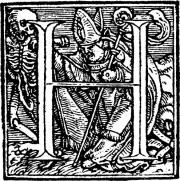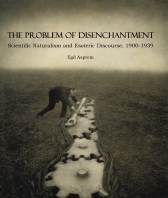Inspired by my colleague Asbjørn Dyrendal’s recent spur of book blogging (i.e. this, this and this), I will further bring to the attention three recent collective volumes on themes that should be relevant to many readers of this blog. While some are more groundbreaking than others, they are all important contributions to their fields, namely: NRM studies, Satanism studies, and the academic study of Aleister Crowley.

Crowley in academia: there has been much academic interest in Crowley over the last decade, but this is the first complete edited volume to connect the lines of scholarship.
The most groundbreaking is probably the volume on Aleister Crowley and Western Esotericism (Oxford UP), edited by Henrik Bogdan and Martin P. Starr. This book has been on the horizon for quite a few years already, and has now finally been released – with a number of very fascinating articles by established specialists in the fields of Western esotericism, new religious movements, and Crowley specialists. Among the names are Alex Owen (known for her studies of Victorian spiritualism, and her book on occultism), Marco Pasi (known as a specialist of Crowley and of modern magic), Massimo Introvigne (the famous NRM scholar and founder of CESNUR), Richard Kaczynski (known, among other things, for his substantial biography of Crowley), and several other great scholars and specialists. The result is a volume that finally places Crowley in a broader context of Western esoteric discourses, charting out predecessors, influences, his contemporary contexts, and especially setting out to show the many ways in which Crowley has influenced “alternative” religiosity in the West in the post-war era – from modern Satanism, to Paganism, to L. Ron Hubbard’s dianetics. This book will be required reading for anyone inquiring into the place of Crowley in the religious and esoteric landscape of the 20th century.
Less of a novelty in itself, but still an important reference work that has made some unusual and intriguing decisions (we like that), is Olav Hammer and Mikael Rothstein’s Cambridge Companion to New Religious Movements. Handbooks, readers and companions to “NRM studies” have appeared with semi-regular intervals since the 1990s or so (e.g. this, this, this, this, this and this – list could easily be multiplied). This new companion does the work it’s supposed to do: a solid theoretical and methodological grounding, a clear thematic and conceptual overview of the NRM field, and a fairly representative sample of case studies included – all written by a team of leading experts. What I found most refreshing with this volume, though, is that the editors have been courageous enough to push the boundaries of the field as it has commonly been conceptualised, and thus sought to include articles on topics that would not typically have been found in a book like this. Especially interesting is the choice to get away from the “Western” and “Western-influenced” bias of usual NRM-samples, and consider religious innovation in other cultural spheres as well. Thus there is not only an article on NRMs in sub-Saharan Africa, and one on neo-Sufism, but also an attempt to conceptualise global Jihadism as a New Religious Movement. The latter is an intriguing endeavour, although the article in question might not be enough to convince everyone that al-Qaida belongs in the NRM category. It can nevertheless help to challenge presuppositions in NRM studies and Islamic studies alike, and lead to some fresh perspectives (always much appreciated in fields where hundreds of scholars often continue looking at the same figures and movements over and over again).

The academic study of Satanism is getting estabished – this book is living testimony of its intellectual quality.
The third book is related to the two previous: Jesper Aa. Petersen and Per Faxneld’s The Devil’s Party: Satanism in Modernity (Oxford UP). This is another groundbreaking volume; it is the culmination of the first ever academic conference on modern Satanism, which was held at the Norwegian University of Science and Technology (NTNU) in Trondheim back in 2009. Since then, there has been one more conference on this theme, in Stockholm, and I hear that a third one is currently being planned. Again, there has by now been quite a few monographs and volumes on the subject of Satanism (above all this one), and a field of study has been emerging and growing in the recent decade. The present volume indeed brings together the most central names in this development. It covers most of the field of “Satanism studies” in its breadth of scope and depth of analysis. Chronologically, articles deal with early modern conceptions of witchcraft and the satanic, continue through the Romantic fascination with the old adversary, an analysis of satanic and Luciferian motifs in political movements of the late 19th century, before we get closer to the formation of “modern religious Satanism” in LaVey, the Church of Satan, the ensuing schisms, and diffusions of satanic identities and themes in popular culture, art, cyberspace, and so on. Again, this book will be a standard reference for anyone getting into the academic study of Satanism.
![]()
This blog post by Egil Asprem was first published on Heterodoxology. It is licensed under a Creative Commons Attribution-ShareAlike 3.0 Unported License.







[…] (and until recently, a colleague at NTNU) Jesper Aagaard Petersen – who, among much else, released The Devil’s Party back in 2012, co-edited with Per Faxneld. “Satanism studies” has established itself as a small […]